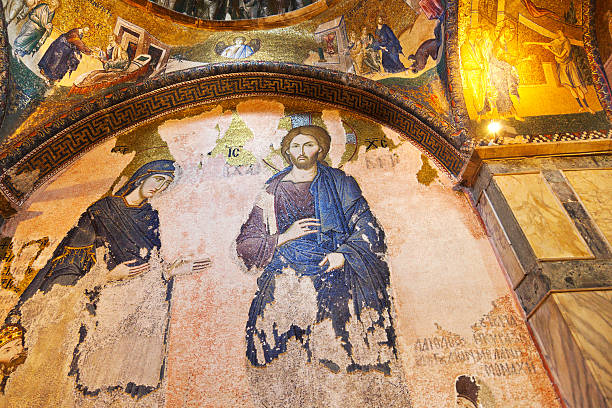
Chora Museum – The Chora Church is the most beautiful Byzantine church after Hagia Sophia in Istanbul. It has frescoes and mosaics that reflect the magnificent heritage of Byzantine art. The Chora Church Museum is open daily from 9 a.m. at 4:30 p.m. except Wednesdays.
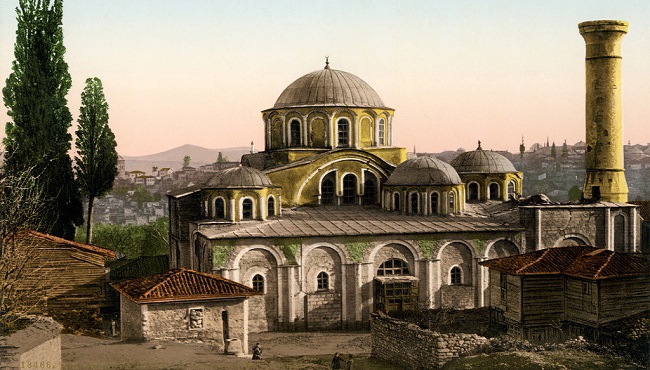
The word “Chora” means “in the country” in Greek because of the original church which was outside the city walls. There are no remains left from the original church and the first form of the present structure dates back to 11C.
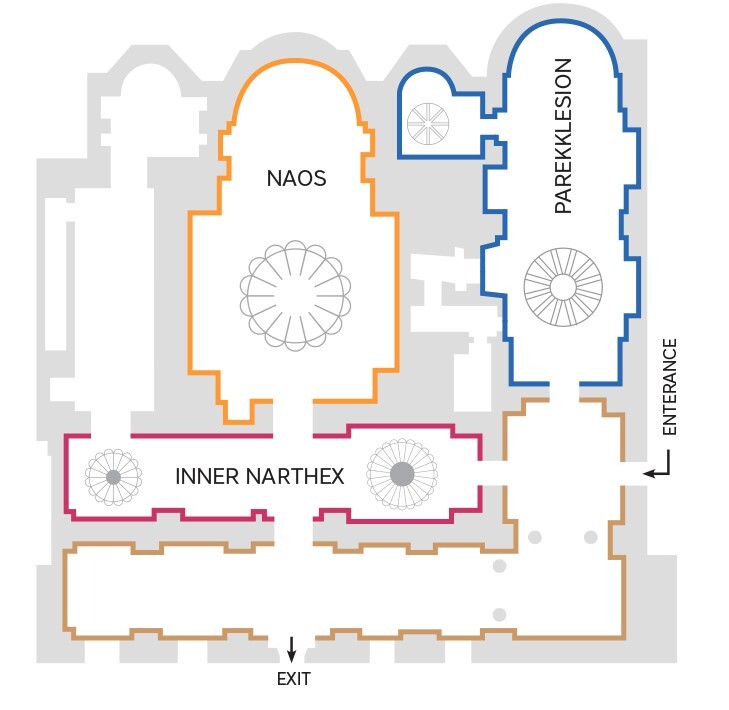
The church consists of the nave, the inner narthex, the outer narthex and the paracclesion. The domes of the inner narthex and the paraclesia are lower than the main dome and can only be seen from the rear of the church. The drum is supported by four enormous pilasters at the angles of which four large arches emerge. The transition is provided by pendants. The drum has 16 flutes, each perforated by a window. The entrance to the nave is through the narthex both inside and outside. The niches of the paraclesia were built to store the sarcophagi, since this section was the funeral chapel.
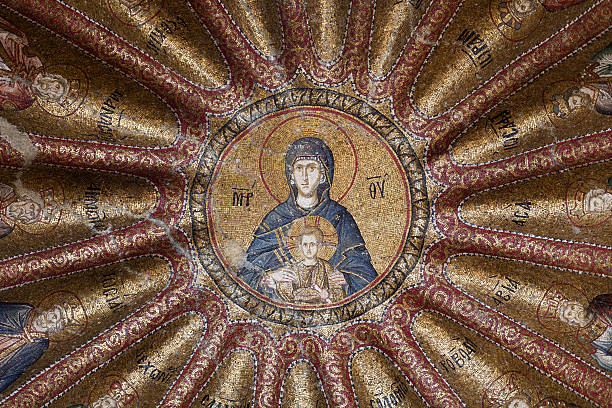
The mosaics represent the life of Jesus Christ and the Virgin Mary. The background elements and architectural motifs are highlighted to give depth. The scenes are realistic as if they were taken from everyday life with correctly proportioned characters. Jesus has a humanitarian look on his face.
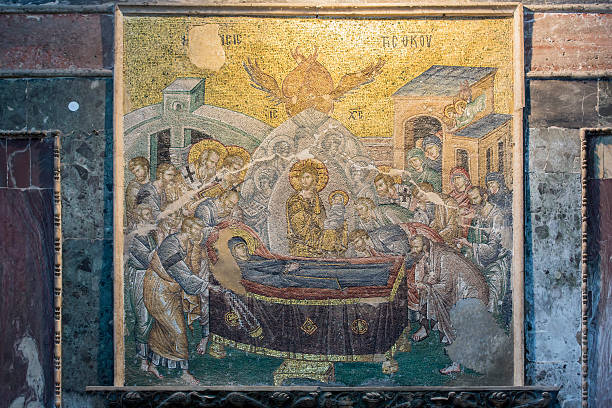
The most important mosaics are:
Boat; (1) Koimesis, the Dormition of the Virgin. Before going to heaven, his last dream. Jesus holds a child, symbol of the soul of Mary; (2) Jesus Christ; (3) The Virgin Mary.
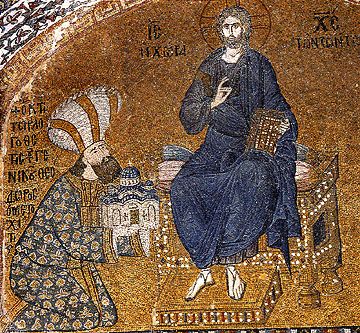
Narthex interior; (4) Christ enthroned with the donor, Theodorus Metochitus offering a model of his church; (5) San Pedro; (6) Saint Paul; (7) Deesis, Christ and the Virgin Mary (without Saint John the Baptist) with two donors below; (8) Genealogy of Christ; (9) Religious and noble ancestors of Christ.
The mosaics of the first three sections of the interior narthex reflect the birth and life of the Virgin. Some of them are: (10) Rejection of Joaquín’s offerings; (11) Annunciation of Santa Ana, the angel of the Lord announcing to Ana that her prayer for a child has been heard; (12) Meeting of Joachim and Anne; (13) Birth of the Blessed Virgin; (14) Seven first steps of the Virgin; (15) The Virgin caressed by her parents; (16) The Virgin blessed by the priests; (17) Presentation of the Virgin in the Temple; (18) The Virgin receiving bread from an angel; (19) The Virgin receiving the skein of purple wool, since the priests decided that the young girls present wove a veil for the Temple; (20) Zacarías praying, when the time came to marry for the Virgin, the High Priest Zacarías gathered all the widowers and placed his rods on the altar, praying for a sign that would indicate to whom it was to be delivered; (21) The Virgin entrusted to Joseph; (22) Joseph taking the Virgin to her house; (23) Annunciation to the Virgin at the well; (24) José leaving the Virgin, José had to leave for six months on business and on his return, the Virgin was pregnant and got angry.
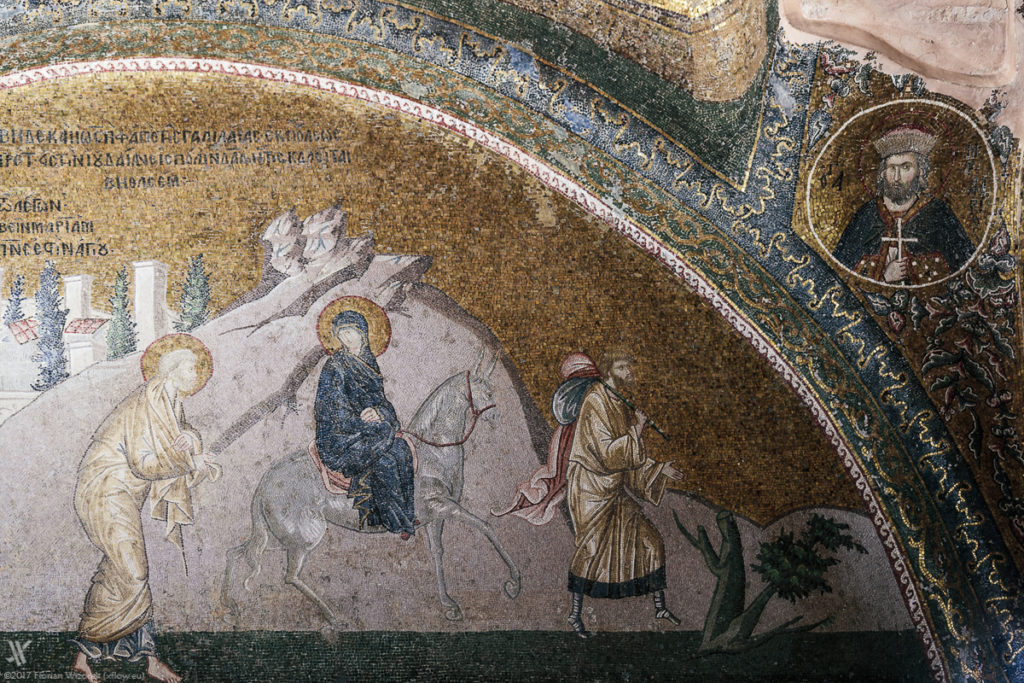
Here it does not continue chronologically: (42-44) Milagros.
Narthex exterior; (25) Joseph’s dream and his trip to Bethlehem; (26) Registration for taxation; (27) Nativity, birth of Christ; (28) Journey of the Magi; (29) Investigation of Herod; (30) Flight into Egypt; (31-32) massacres ordered by Herod; (33) Mothers mourn their children; (34) Escape from Isabel, mother of Saint John the Baptist; (35) Joseph dreaming: Return of the holy family from Egypt to Nazareth; (36) Christ taken to Jerusalem for the Passover; (37) Saint John the Baptist witnessing to Christ; (38) Miracle; (39-41) Miracles.
(45) Jesus Christ; (46) The Virgin and the angels in prayer.
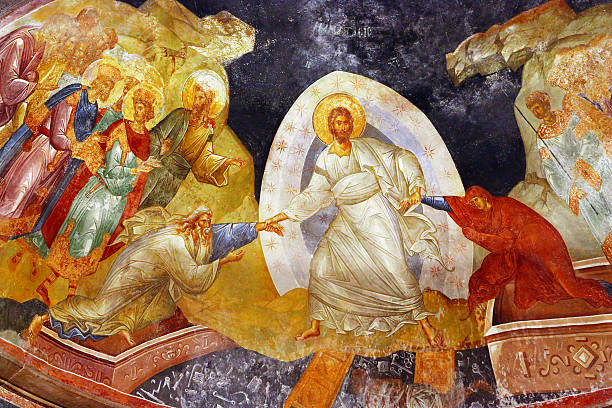
Paracclesion; The pictures here are cool. This chapel was designed to be a burial place. Among the main frescoes of the paracclesion are the following: (47) Anastasis, the resurrection. Christ, who had just knocked down the gates of hell, stands in the middle and tries to lift Adam and the Virgin Mary from their graves. Behind Adam are Saint John the Baptist, David and Solomon. Others are righteous kings; (48) The second coming of Christ, the final judgment. Jesus is on the throne and on both sides the Virgin Mary and Saint John the Baptist (this trio is also called Deesis); (49) The Virgin and Child; (50) Heavenly Court of Angels; (51-52) Moses.
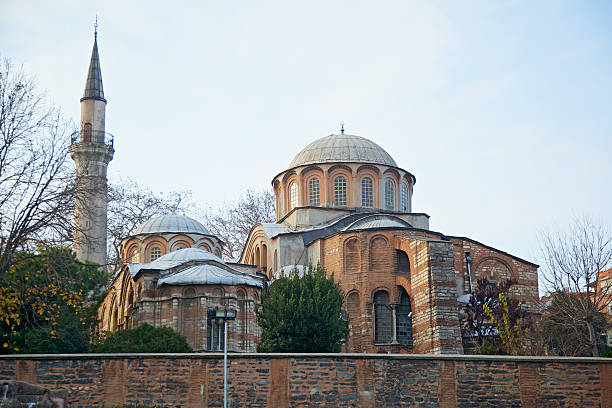
After the Turks arrived in Istanbul, this building, like Hagia Sophia, was transformed into a mosque. In 1948 it became a museum without leaving any Islamic element in the building, except for the minaret of the s. XIX at the corner.

